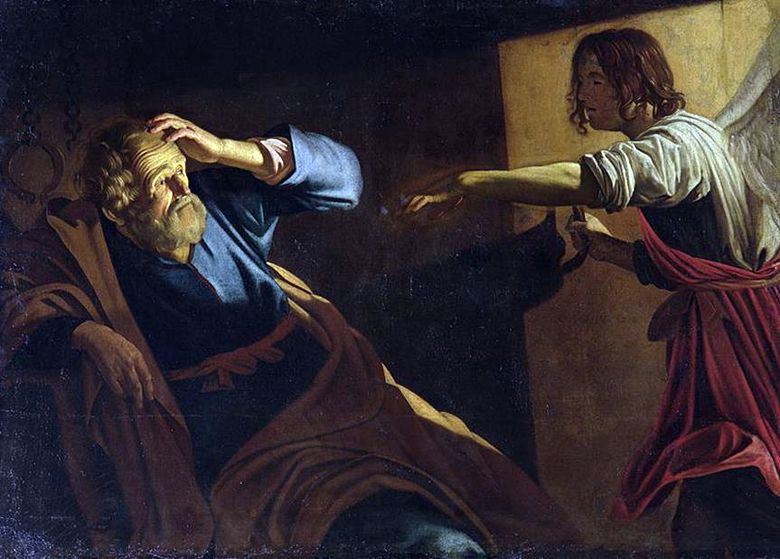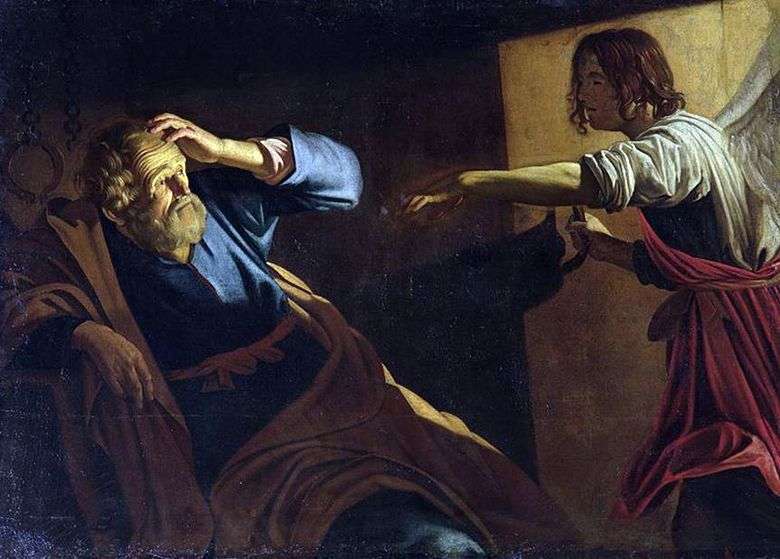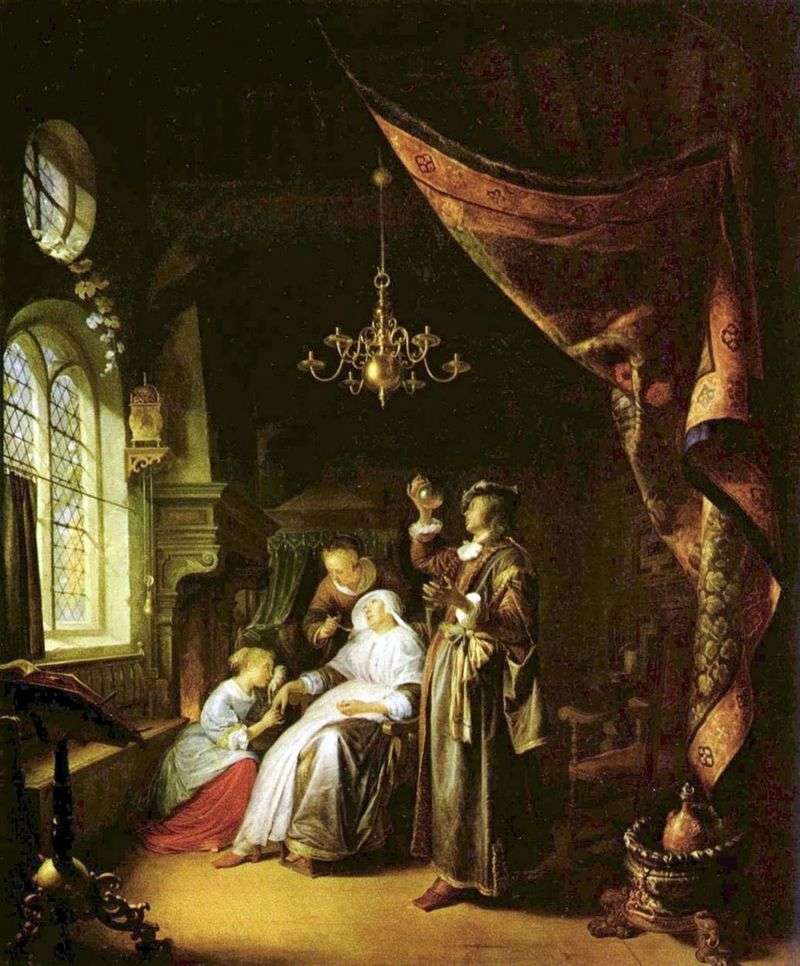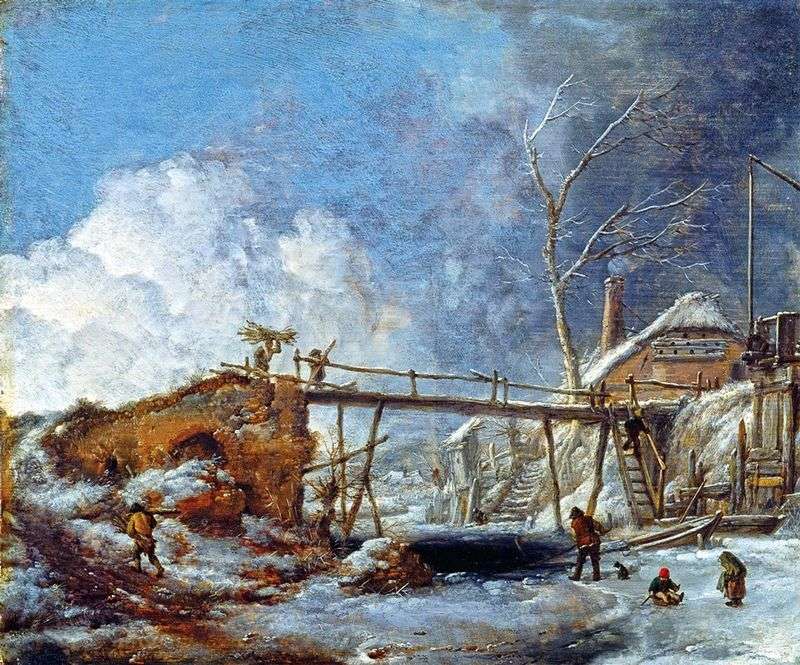
Dutch painter Gerrit van Hohnhorst was born in Utrecht and studied painting at A. Bidmart. In 1610-1619 the artist improved his skills and worked in Rome. His work was greatly influenced by the art of Caravaggio. After returning to Utrecht, Honhorst created a series of compositions with large semi-figures or generations of images in the spirit of Caravaggio, but his characters were more spontaneous and optimistic.
The master liked to write night scenes, effectively using artificial lighting techniques, for which he even received the nickname “Gerardo Nogta deeds” – “Gerardo Night”. In 1622, Honhorst became a member of the Guild of Painters in Utrecht. In 1628, he visited London, and in 1635-1652 he lived and worked in The Hague. In the early period of creativity, the master wrote mostly pictures on religious themes, from the 1620s he turned to secular subjects. In The Hague, they painted portraits of the princes of Orange.
The painting “The Liberation of St. Peter” on the plot of the miraculous liberation of the apostle Peter from the prison refers to the early period of the artist’s work. Other famous works: “Childhood of Christ.” The Hermitage, St. Petersburg; “Penitent Mary Magdalene.” The Hermitage, St. Petersburg; “Christ before Kayafa.” The Hermitage, St. Petersburg; “Shepherd”. 1620. The Pushkin Museum. A. S. Pushkin, Moscow; “Shepherdess”. 1620. The Pushkin Museum. A. S. Pushkin, Moscow.
 La libération de St. Petra – Gerrit van Honhorst
La libération de St. Petra – Gerrit van Honhorst Lanzamiento de sv. Petra – Gerrit van Honhorst
Lanzamiento de sv. Petra – Gerrit van Honhorst Patient and doctor by Gerard (Gerrit) Dow
Patient and doctor by Gerard (Gerrit) Dow Winter landscape with a wooden bridge by Phillips Wouverman
Winter landscape with a wooden bridge by Phillips Wouverman The sea at Haarlem by Jan van Goyen
The sea at Haarlem by Jan van Goyen Birds in the park by Melchior de Hondecuiter
Birds in the park by Melchior de Hondecuiter Resurrection of Lazarus by Guercino
Resurrection of Lazarus by Guercino The Liberation of St. Peter by Claude Lorrain
The Liberation of St. Peter by Claude Lorrain